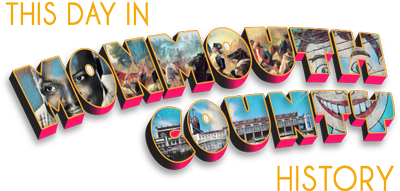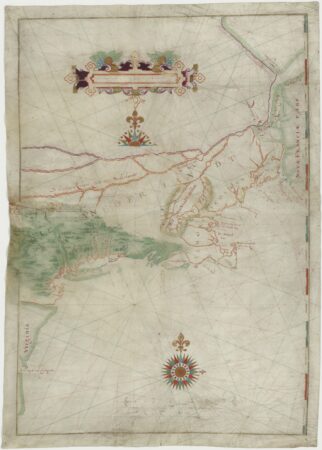The earliest European explorers of the Americas never caught even a glimpse of any part of the northern Atlantic coast. Christopher Columbus explored and settled various Caribbean nations, while Amerigo Vespucci’s explorations appear to have been mostly of South America, specifically, from Brazil to Venezuela. Ponce de Leon of Spain discovered Florida and Puerto Rico in the early 16th century, but went no further north.
In the late 15th century, Italian navigator Giovanni Caboto, who became known by his Anglicized name, John Cabot, made several voyages to North America on behalf of English King Henry VII. The first voyage explored the coast of Canada; his final voyage, in 1498, about which there exists some controversy among historians, is believed to have taken him down the Atlantic coast from Canada to the Chesapeake, and possibly even further south to the Caribbean. Thus, if true, Cabot’s final voyage represents the first European exploration of New Jersey.
On January 17, 1524, Giovanni da Verrazzano (1485–1528), an Italian navigator in the service of King Francis I of France, set sail from Brittany to explore the eastern coast of North America. His intent was to find a passage to the Pacific Ocean. On this, one of several voyages he led to the Americas, he explored and mapped the region from Cape Fear, North Carolina, up to Nova Scotia and Newfoundland, Canada. Along the way, he discovered New York harbor, thinking it a large lake; and Cape Cod Bay.
During this period, explorations such as Cabot’s and Verrazzano’s were funded by commissions, typically from either royalty or leading businesses such as the Dutch East India Company. These explorations were the basis for territorial claims by France, Spain, England, The Netherlands and Portugal as they pursued new lands around the world to colonize. Verrazzano’s voyages were a basis for French territorial claims in Canada, while English claims to Canada were based on Cabot’s explorations.
In 1609, English sea captain and explorer Henry Hudson was hired by the Dutch East India Company passage to find a passage to Asia. He ended up exploring the waters off the east coast of America aboard the Half Moon. His first landfall was at Newfoundland and the second at Cape Cod. Hudson believed that the passage to the Pacific Ocean was between the St. Lawrence River and Chesapeake Bay, so he sailed south to the Bay, then turned northward, traveling close along the shore. He discovered Delaware Bay and began to sail upriver looking for the passage. This effort was foiled by sandy shoals, and the Half Moon continued north. After passing Sandy Hook, Hudson and his crew entered Upper New York Bay. Believing he had found the passage to the Pacific, he sailed up the river that now bears his name until the waters became too shallow, at the site of Troy, N.Y.
Upon returning to the Netherlands, Hudson reported that he had found a fertile land and an amicable people willing to engage his crew in small-scale bartering of furs, trinkets, clothes, and small manufactured goods. Thus Hudson’s explorations became the basis for the Dutch territorial claim to the Northeast Atlantic region, which resulted in the settlement of New Netherland in 1610 (see early Dutch map in the photo above). From this point forward, explorations and mapping of the Americas was led by settlers and navigators who made this new land their new home. England and The Netherlands would come to dispute each others’ claim to this new colony, and would go to war several times before the Dutch finally conceded the region to England.
Source: Source: http://www.njfounders.org/history/early-exploration-new-jersey


Leave a Reply